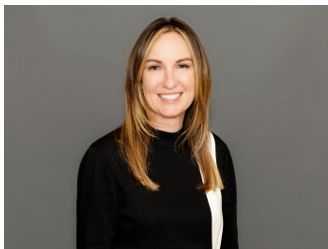Contributions, achievements, and observations of outstanding female professionals – Women to Watch Part III
To mark International Women’s Day, the women of ION Analytics, including reporters and analysts at Debtwire, Mergermarket, Dealreporter, Cybersecurity Law Report, Hedge Fund Law Report, and Anti-Corruption Report have interviewed outstanding women in their respective jurisdictions and fields.
It is our honor to highlight these women and their accomplishments and contributions to their industries, and share some of their insights and perspectives. These lawyers, advisors, and consultants from around the world specialize in private equity, restructuring, mergers and acquisitions, hedge funds, anti-corruption, data privacy, and more. We hope these remarkable women inspire you as much as they do us.
In Part III of this eight-part series, Dawn Grocock, Senior Legal Analyst at Debtwire Europe, profiles notable women in the UK restructuring field, including (i) Katrina Buckley, A&O Shearman, (ii) Jo Hewitt, FTI Consulting, (iii) Georgina Peters, South Square, (iv) Emma Gateaud, Freshfields; and (v) Professor Sarah Paterson, LSE.
Part I of the Ion Analytics Women to Watch series
Part II of the Ion Analytics Women to Watch series
Katrina Buckley, Global Co-Head of Restructuring, A&O Shearman, London

Katrina Buckley is Global Co-Head of Restructuring acting for clients across the capital structure including financial institutions, funds, corporates and insolvency practitioners. She advises on complex cross-border transactions and has extensive experience working on schemes of arrangement and restructuring plans as well as out of court restructurings and formal insolvencies. Katrina has advised on some of the most significant restructurings and insolvencies in the European market over the last 25 years covering a wide range of industries. Current engagements include advising the bank lenders to Thames Water, advising Swedish battery manufacturer Northvolt, and advising the administrators to Greensill Capital UK.
To what extent do you think that liability management exercises (LMEs) will play a role in reducing in-court restructurings of large companies, and what other impacts have you seen/do you predict from the increase in these transactions?
I think we have already seen this development which arises from a number of factors including the increasing use of high yield bonds and widely held term loan Bs in capital structures, flexible/loose documentation and strong sponsors. In this environment we have seen increasing use of LMEs to extend maturities, capture discounts in bond trading prices and provide liquidity. LMEs operate on the basis that less than 100% creditor consent is needed for the transaction. They therefore provide an alternative to an in-court restructuring, which would otherwise be used to deliver a non-consensual transaction. LMEs are beneficial to sponsors as they preserve equity value. They also create opportunities for funds which can deploy capital and increase returns through non-pro rata deals. However, these transactions do not de-lever the capital structure, and in many cases it may be a question of kicking the can down the road. A number of US borrowers have carried out LMEs but have ended up in Chapter 11. Other impacts include, on the creditor side, documentary changes to block the more aggressive LMEs and the rise of co-operation agreements as a defensive mechanism and, on the sponsor side, attempts to prohibit the use of co-operation agreements. Finally, we are seeing a willingness to challenge LMEs which is part of a broader theme of increased litigation in restructurings.
According to a 2024 article “Women in the Legal Profession” published by the American Bar Association, women constitute roughly 50% of law students, federal government lawyers, and law firm associates, but men continue to dominate the upper levels of the legal profession. Similarly, in 2023, McKinsey & Co found that women comprise approximately 20% of managing director and partner roles in private equity. To what extent have you observed there to be a reduced number of women in senior positions and what advice would you give to women who aspire to these positions?
Restructuring continues to be a male dominated field, in particular in funds and financial advisory firms where there are few women leaders. That said there are notable exceptions and progress has been made through targeted initiatives by firms and the work of women’s networks. I am particularly pleased that A&O Shearman has been ranked by the FTSE Women Leaders Review in the top 10 of the UK’s largest private companies for women in leadership roles achieving a target of 40%. As regards advice, I would encourage women to be ambitious and deliberate about seeking leadership roles. Set goals, take advantage of leadership training, seek out mentors and allies and above all articulate your desire to be a leader. As a newly made-up partner I pointed out that the partnership selection committee for my practice lacked any women. I was promptly asked to join the committee, which was beneficial to me and the firm! Women have an enormous amount to contribute as leaders, including collaboration and listening skills and a diversity of perspective and women should not be shy about putting themselves forward.
What is the first big project that you took the lead on, and what did you learn from it?
One of the first major restructurings I took the lead on was of a Slovak steel business. It was a highly political case with numerous international and local stakeholders, an urgent new money need and many legal and commercial challenges. I have vivid memories of standing up in front of a group of local creditors trying to explain the concepts of a standstill and exchanging documents with the other side’s lawyers on the plane. Key things I learned were the importance of client relationships (which I have retained to this day), the need to work constructively with different stakeholders in order to build a consensus and the importance of building a team around you and not doing everything yourself. These lessons have been crucial in my career as a partner.
Jo Hewitt, Senior Managing Director, FTI Consulting, London

Jo has more than 20 years of experience advising companies, financial institutions, private equity funds and other creditors of distressed organisations on restructuring situations and refinancings. She also serves in insolvency appointments and has played a key role in some of the UK’s largest and most complex administrations. Additionally, she is a market leader in European restructuring plans. Prior to joining FTI Consulting, Jo was a Managing Director at Alvarez & Marsal. Previously, she was a Director at EY. Jo’s experience includes: leading the relevant alternative analysis to support the Virgin Atlantic restructuring plan; preparing the relevant alternative evidence and advising the DeepOcean group on its restructuring plan, which saw the first ever cross-class cram-down in the UK; advising lenders to Cimolai in connection with its UK and Italian restructuring plans; and advising creditors on the National Car Parks, Superdry and Virgin Active restructuring plans.
To what extent do you think that liability management exercises (LMEs) will play a role in reducing in-court restructurings of large companies, and what other impacts have you seen/do you predict from the increase in these transactions?
LMEs are established processes in the US and their use in Europe has grown massively over the past three to five years but are perhaps not yet as mature here. LMEs can be a very versatile and powerful restructuring tool, and they are playing an increasingly important role in the European market. I think this trend will continue but I do not expect it to have a huge further impact on in-court restructuring numbers over time, not least as lenders and markets are adapting for example, through early organization/co-operation agreements to protect their position and blanket anti-LME provisions now starting to appear in credit documents.
Also, if you look to the more established US market, it is not uncommon to see a debtor who has been through an LME, subsequently go through a Chapter 11 process – so it will be interesting to see how this plays out in the UK. Will debtors sidestep LMEs for the RP given its flexibility, availability of the cross-class cram down and lower costs vs. a Chapter 11? Or will we see more two stage processes which will undoubtedly have a bearing on the approach of both debtors and creditors.
According to a 2024 article “Women in the Legal Profession” published by the American Bar Association, women constitute roughly 50% of law students, federal government lawyers, and law firm associates, but men continue to dominate the upper levels of the legal profession. Similarly, in 2023, McKinsey & Co found that women comprise approximately 20% of managing director and partner roles in private equity. To what extent have you observed there to be a reduced number of women in senior positions and what advice would you give to women who aspire to these positions?
It’s no secret that while women are entering fields like law and finance in equal numbers to men, they’re still underrepresented in senior leadership roles. From what I’ve seen, a lot of this comes down to a mix of factors – unconscious and conscious bias, fewer sponsorship opportunities and of course the challenge of balancing career growth with personal responsibilities and priorities. It is certainly not about a lack of talent or ambition. Firms that prioritise attracting and retaining talent often recognise the advantages of diverse leadership teams and are committed to continuous progress.
From my experience, one of the biggest things that can help women aiming for top positions is having mentors and sponsors. Having someone in your corner to offer advice and advocate for you can make a huge difference. I am grateful to have had amazing mentors and sponsors over the years, the particular standout one being Jo Robinson of EY who was instrumental in my earlier career. At the same time, it is important to keep building your skills – both technical and leadership. Look for opportunities to make new connects within your firm, at industry events, or even during your commute. You never know what opportunities might come from a simple conversation. And don’t forget to advocate for yourself – whether that is to receive recognition for your achievements, to be considered for a project that you want to be part of, or anything else that matters to you.
What is the first big project that you took the lead on, and what did you learn from it?
This was Nortel Networks, where I acted as Nominee and Supervisor on multiple simultaneous company voluntary arrangements (CVAs) across Europe which facilitated the return of c.USD 1bn to creditors. This involved leading teams across 16 jurisdictions to gain the agreement of each company’s stakeholders to secure the requisite consents.
It was my first insolvency appointment, and with so much value at stake the pressure was on! What this project hammered home for me was the importance of really understanding local market and stakeholder dynamics in cross-border restructurings — without this we would never have been able to secure the successful outcome that we did for the creditors.
Georgina Peters, Barrister, South Square, London

Georgina Peters was called to the English Bar in 2005 and BVI Bar in 2022, and practises at South Square. Georgina is experienced in complex and high-value restructuring cases, typically with international elements bordering multiple jurisdictions. In recent years, these have included cases concerning both English and US Chapter 11 proceedings (Hertz, Valaris, Diamond Offshore Drilling) and BVI proceedings (Vidatel). She appeared in the first major contested Part 26A restructuring plan (Virgin Active) – and subsequent restructurings include DTEK, Hong Kong Air, Lamo, Prezzo, Fitness First, Aggregate and Thames Water. She is ranked in all three principal legal directories – described as an “intellectual powerhouse” who “identifies what really matters in a case.”
To what extent do you think that liability management exercises (LMEs) will play a role in reducing in-court restructurings of large companies, and what other impacts have you seen/do you predict from the increase in these transactions?
From the English perspective, an important question is whether the courts will view LMEs as violating the English legal principle of minority protection, which regulates the exercise of a contractual power by a majority within a class of lenders to bind a minority within that class.
This principle is often raised as an impediment to LMEs which rely on majority consents and involve differential treatment between assenting and dissenting creditors. It was successfully relied on in a 2012 first instance decision, Assénagon Asset Management SA v Irish Bank Resolution Corp Ltd, involving an exit consent attempted by Anglo Irish Bank.
On the basis of existing English case law, it is uncertain to what extent the English courts will view an LME involving differential treatment within a class as sufficiently oppressive or unfair to breach the minority protection principle. So we are waiting to see whether any LMEs which are governed by English law will be tested through a challenge, and the approach of the English courts to any challenge.
Until then, I do not see LMEs reducing the number of in-court restructurings under Parts 26/26A of the Companies Act 2006.
According to a 2024 article “Women in the Legal Profession” published by the American Bar Association, women constitute roughly 50% of law students, federal government lawyers, and law firm associates, but men continue to dominate the upper levels of the legal profession. Similarly, in 2023, McKinsey & Co found that women comprise approximately 20% of managing director and partner roles in private equity. To what extent have you observed there to be a reduced number of women in senior positions and what advice would you give to women who aspire to these positions?
I think the direction of travel is changing, albeit slowly. The number of women in senior positions reflects an imbalance in the representation of women which has existed for too long. As time goes on, and junior members of the legal profession progress upwards, the proportion of women will rise.
At the English Commercial Bar, we see increasing numbers of female applicants every year, which is not surprising because it is a highly rewarding career choice at which women can and do thrive. We are still a very long way from parity of representation at senior levels, but I am hopeful for the future.
What is the first big case that you took the lead on, and what did you learn from it?
The first major case in which I took a leading role was an ISDA close out dispute involving a failed Icelandic bank. It involved foreign exchange trades in a fast depreciating currency (Icelandic Krona), and largely turned on the events of around 8 October 2008 and the market value of the Krona over a 24-hour period.
Speaking to our expert witnesses, including those at the Central Bank of Iceland, was a fascinating insight into the events of that day. Beyond that, the main lesson I learned was to how to marshal large volumes of complex valuation evidence for trial. It was also a lesson in taking advantage of every professional opportunity which comes to you, because you never know where it might lead.
Emma Gateaud, Partner, Freshfields, London

Emma is a partner in the Restructuring team and acts across the capital structure for a variety of stakeholders (debtors, lenders, sponsors etc) on a wide range of complex and cross border restructurings. She is a native French speaker and has worked on many French and cross-border restructurings and also focuses on financial services.
To what extent do you think that liability management exercises (LMEs) will play a role in reducing in-court restructurings of large companies, and what other impacts have you seen/do you predict from the increase in these transactions?
Liability management i.e. using flexibility /majority voting powers within the documents is not a new phenomenon per se. LME transactions have been in play for a long time – enabled by the flexible documentation at origination.
LME transactions can be a very useful tool for sponsors to access liquidity or address near term maturities, sometimes relatively quickly and without too much disruption. They often give businesses more time and liquidity to allow the underlying performance to recover and they can thereby facilitate a more holistic refinancing or recapitalisation. Therefore, LME tools if well deployed can be very effective and less intrusive than a full scale restructuring.
We are seeing, more and more, a willingness of sponsors and lenders to take advantage of document flexibility to try more “daring” transaction types, sometimes leading to so-called “creditor on creditor violence.”
However, an overly aggressive LME strategy could also lead to costly and damaging litigation. The other potential impact for businesses with the increasing LME trend is that, depending upon the solution, these can sometimes turn out to be “sticking plaster” solutions, while the deeper balance sheet issues are not resolved. LME transactions tend to focus on addressing a near term liquidity need or potential defaults. Therefore, if the business performance does not improve during the time gained, they can be a precursor to a larger more holistic restructuring, where a cram-down mechanic must be used to enable a further de-leveraging/restructuring of the business.
Depending on the situation, a well utilized LME transaction could provide a stable platform for a wider restructuring but in some cases especially following aggressive LME strategies, it could result in increasing complexity because of fragmented lender groups (and ever more interesting transactions for lawyers like me!).
According to a 2024 article “Women in the Legal Profession” published by the American Bar Association, women constitute roughly 50% of law students, federal government lawyers, and law firm associates, but men continue to dominate the upper levels of the legal profession. Similarly, in 2023, McKinsey & Co found that women comprise approximately 20% of managing director and partner roles in private equity. To what extent have you observed there to be a reduced number of women in senior positions and what advice would you give to women who aspire to these positions?
I am not surprised by these figures. In the pre-covid days of large in-person client meetings, I remember, on multiple occasions, walking into a client meeting and looking around to find that I am the only woman. However, my experience has been that these sorts of occurrences are diminishing.
I feel privileged to be part of a firm led by a woman senior partner and half of the partners in my core restructuring team are women. This is incredibly empowering and I hope to continue to support women in their own journeys.
I won’t attempt to proffer advice to women in particular as every person has their own path/journey … and the focus needs to be on how businesses continue to increase diversity among their leaders and workforce (not just gender balance but also more widely e.g. ethnicity balance etc). This is the way, in my view, to address the underlying causes of imbalance.
What is the first big project that you took the lead on, and what did you learn from it?
It’s difficult to pin-point the exact project but I do remember the first time that a client in a difficult restructuring transaction would have me on “speed dial” – to rehearse every conversation/action/step at the peak of the negotiations. I learnt and saw then the incredibly important human element of every transaction – especially at times of financial distress for our clients. It’s something I see time and time again, whatever the size of the role, creating a rapport/connection with and understanding the people you work with and across from remains the key to success.
Sarah Paterson, Professor of Law, LSE, London

Sarah Paterson is a Professor of Law at The London School of Economics and Political Science where she teaches and researches corporate insolvency and restructuring law. Before joining the LSE, Sarah was a partner in the Restructuring and Insolvency Group of Slaughter and May, with whom she retains a senior consultancy. Sarah researches and writes about all aspects of corporate insolvency and restructuring law. She co-authors the comparative US and UK corporate section of Debt Restructuring with Alan Kornberg and is the author of a monograph, Corporate Reorganization Law and Forces of Change, published by OUP. Sarah is a member of the technical committee of the Insolvency Lawyers’ Association, III, and the General Technical Committee of R3.
To what extent do you think that liability management exercises (LMEs) will play a role in reducing in-court restructurings of large companies, and what other impacts have you seen/do you predict from the increase in these transactions?
There are well-known uncertainties about the approach an English court would take to some of the US LME tools. Moreover, English law finance documents may pose new challenges, and there is no Absolute Priority Rule prescribed in Part 26A restructuring plans so that some of the issues that LMEs avoid in US Chapter 11 are not a problem for England’s restructuring tools. On the other side of the Atlantic, new strategies may emerge as a result of the decision of the US Court of Appeals for the Fifth Circuit in Serta Simmons and documentary terms may tighten, raising new challenges. And there may be renewed focus on the utility of LMEs in some cases given litigation risk, on the one hand, and the question of whether the transaction provides a permanent solution to the company’s financial difficulties or simply buys time, on the other. 2025 may be a make-or-break year for the techniques.
According to a 2024 article “Women in the Legal Profession” published by the American Bar Association, women constitute roughly 50% of law students, federal government lawyers, and law firm associates, but men continue to dominate the upper levels of the legal profession. Similarly, in 2023, McKinsey & Co found that women comprise approximately 20% of managing director and partner roles in private equity. To what extent have you observed there to be a reduced number of women in senior positions and what advice would you give to women who aspire to these positions?
I am struck by how many talented women there are in senior positions in the UK compared with events that I attend in other jurisdictions. Many of the leading corporate insolvency and restructuring scholars are women – Professor Kristin van Zwieten, Professor Louise Gullifer and Professor Jennifer Payne, to name a few. My advice would be to know your skill set and stick to it. One of the worst moments of my professional career was organising a Scalextric evening as a hospitality event for a largely male guest list. I knew absolutely nothing about Scalextric (my brother did not have one when we were growing up) and I had no idea how small the set that I had hired for the evening was going to be. There were a very large number of anxious players crowded around a truly tiny racing track. I have never tried to host a hospitality event around something I know nothing about again ….
What is the first big project that you took the lead on, and what did you learn from it?
I started as a senior associate on the Railtrack administration and became a partner during the course of the job. I hugely admired the professionalism with which Alan Bloom and the team at Ernst & Young steered such a challenging case, but Railtrack has also been foundational for much of my academic work. English restructuring tools are world-leading provided that the company’s financial distress has not spread too deeply into its operations. They are, though, much less effective when a firm is in deeper distress. This is where administration could step in – to wrap the company in a protective blanket while rescue is attempted. Although Railtrack was a special administration case, it shone a light on how administration can be used more generally as a stabilisation and liquidity-creating tool. In my view, we took a wrong turn in introducing the Part A1 moratorium rather than amending administration to make it better adapted for cases in which its rescue purpose is being pursued. I remain hopeful that before I finally hang up my scholarly boots administration will finally receive the make-over and the recognition that it deserves!
by Dawn Grocock
Dawn is a former practising restructuring and insolvency lawyer. Prior to joining Debtwire as a Legal Analyst, Dawn practised with DLA Piper UK LLP and Stevens & Bolton LLP, as well as working in legal know-how for LexisNexis. Dawn’s experience includes advising lenders, insolvency practitioners, directors and creditors in relation to insolvency and restructuring issues. Dawn worked on several large-scale restructurings.
We have obtained the information provided in this report in good faith from sources that we consider to be reliable, but we do not independently verify the information. The information is not intended to provide tax, legal or investment advice. We shall not be liable for any mistakes, errors, inaccuracies or omissions in, or incompleteness of, any information contained in this report. All such liability is excluded to the fullest extent permitted by law.










